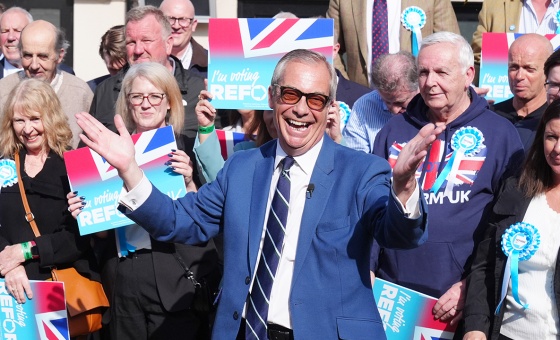This is the last article you can read this month
You can read more article this month
You can read more articles this month
Sorry your limit is up for this month
Reset on:
Please help support the Morning Star by subscribing here
DISCUSSION about the statue of British-born imperialist Cecil Rhodes at Oxford University and what should be done about it, if anything, continues despite Oriel College’s decision to keep it.
Statues surely exist to be taken down — most often in the context of wider movements for social change. Otherwise one might think that a statue of Rhodes serves to remind us of Britain’s inglorious imperial past. It is undoubtedly something that David Cameron would prefer us to forget, assuming he ever knew much about it in the first place.
Cecil Rhodes was the son of a Bishop’s Stortford vicar who packed him off to South Africa at the age of 17 as he had been a sickly child. Reverend Francis William Rhodes thought that the South African climate would be good for the young Rhodes’s health, and this at least was correct.
Rhodes’s ancestors had been brick manufacturers. They were, in short, part of the industrial class that built early British capitalism, if you like, from the bottom up.
They owned substantial areas of land including some in north London such as Tottenham Wood and areas of Muswell Hill.
I went to school in the same area of north London in the 1970s at Alexandra Park Comprehensive School. It was a school with a left-wing reputation, although perhaps not quite as well-known as the nearby Creighton School where the head teacher was Molly Hattersley, at that time the distinguished partner of Roy Hattersley.
Alexandra Park School was on the corner of Alexandra Park Road and Rhodes Avenue — named to mark the Rhodes family’s holdings in the area. Cecil Road is nearby.
This being north London in the 1970s we knew well enough who Cecil Rhodes was and the role he had played in the development of British imperial endeavour in Africa. But we thought little of the matter beyond that.
Street names that recall Britain’s imperial past are hardly unusual but sometimes truth is stranger than fiction.
The African National Congress had emerged as the leading force opposing the apartheid South Africa of which Cecil Rhodes had helped to lay the foundations.
One of the leaders of the ANC was Oliver Tambo who fled South Africa in the early 1960s, partly to evade arrest by the apartheid government but primarily to make sure that the work of the ANC could continue in exile.
In due course he made his way to London, the centre of the old imperial power.
Money was short but Muswell Hill at that time was not the area of super-expensive property it now is.
Tambo and his wife lived in a house in Alexandra Park Road, with other ANC sympathisers living nearby.
His house was less than five minutes’ walk away from Rhodes Avenue.
As the struggle against apartheid intensified and Tambo became an international figure, Nelson Mandela visited Muswell Hill and the local Tottenham MP Bernie Grant was also a visitor.
After Tambo’s death in 1993 the story of his north London years became increasingly well known. In 2007 a bust of Tambo was erected on Albert Road recreation ground, again just a few minutes’ walk from his old home and from Rhodes Avenue.
Imperialism and the man that helped to end its rule in South Africa are marked within a few hundred yards of each other in Muswell Hill.
Whatever the fate of the Oxford Cecil Rhodes statue, the bust of Oliver Tambo continues to stand proud.
- Keith Flett is secretary of Haringey TUC.






